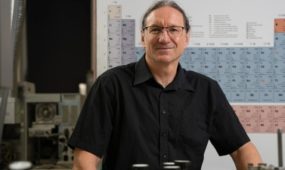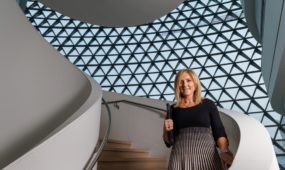Food security solutions are out of this world
Education
INTERNATIONAL space experts are pooling their talents to use the space industry to help solve global food and water security issues.

Sign up to receive notifications about new stories in this category.
Thank you for subscribing to story notifications.
More than 30 participants from 10 nations are in Adelaide, South Australia, for the Southern Hemisphere Space Studies Program.
It is the fifth time the University of South Australia has hosted the International Space University program since 2011.
A major focus of the five-week course, which began on January 11, is the creation of a white paper on the topic of food and water security. It will consider how space technologies and space systems can be utilized to improve the production, monitoring and availability of global food and water needs.
Food and Water Security team project chair Dr Ray Williamson said the topic was of vital importance, particularly for developing nations, at a time when the southern hemisphere was in the grips of the El Nino effect.
“We’ll be looking at sensor networks on the ground that communicate with satellites in orbit and then send back information about specific plots where you’ve got your sensors – temperature, humidity, soil moisture,” Dr Williamson said.
“By combining different filters in the data you get back you can begin to determine things like stress on crops because a stressed patch of corn will show a signature in different colours just like when you see the leaves turn brown.
“We’ll be using satellite systems that are already operating, they may want to explore the possibility of dedicated satellite systems and the other thing we’ll be looking at to tie in with the satellite data is data taken from drones flying over, which is a new and rather exciting possibility.”
An example of the possibilities is South Australian company Myriota.
The company was formed to commercialise technology developed by the University of South Australia’s Institute for Telecommunications Research. It will use low earth orbit satellites to provide two-way data connectivity for remote sensors and devices for industries such as agriculture where there is a need to access data in very remote locations.
Dr Williamson said the Southern Hemisphere Space Studies Program would focus on ways to help developing nations find solutions to food and water security issues.
He said it was about finding the right pathways to get the information into the right hands.
“What this will be largely focused on is what can be done with current systems or future systems that wouldn’t be too expensive in developing countries,” Dr Williamson said.
“So it involves education and training and maybe some clever app you could put on your cheap smartphone.”
“One of the reasons we thought this project would be particularly useful in this setting is that we’ve got people from China, we’ve got a student from Zimbabwe, some from Italy and Canada so we have a broad international perspective on things and a broad intercultural perspective.”
The program also involves the building of a miniature satellite to be launched on a high altitude balloon over the Adelaide Hills, a wine region on the periphery of South Australia’s capital city Adelaide, on January 26. The balloon is expected to reach a height of about 25km.
International Space University began in 1988 and has its main campus in Strasbourg, France.
ISU Space Programs Director and former NASA Chief Exploration Scientist John Connolly said the white paper topics were chosen with a view to relating the space industry to practical ways of improving every day life on earth.
“A lot of people think that space is about sending bushels of dollars off to the heavens but it’s not, all the jobs are down here first of all but the benefits are felt down here as well so food and water security is a particular topic that’s of importance to the global south and since we’re in the southern hemisphere we chose that one,” he said.
Connolly said the mini satellite would collect data from vineyards in the Adelaide Hills wine region using remote sensors, visible and infrared imagery.
“We’re going to try to produce some data about the state of those vineyards and how things might be improved. It’s an example of how you use that data for the larger food and water security issue so it’s a little bit of hands on satellite engineering.”
“It introduces them to a network of like-minded individuals who are strategically situated all over the world in different space agencies and commercial companies.
“The education we offer them broadens their perspective. Many of them come in as experts in a particular domain and we introduce them to a very large world where that piece that they know has to fit into a puzzle of other pieces in order to make a successful space venture.
“We do have people who have come out of this program who are astronauts but we have far more who tend to be upper level managers, researchers and engineers at the higher reaches of companies around the world.”
Connolly said the white paper, which will be presented at the program’s closing ceremony on February 12, would be targeted chiefly at governments.
“We’re hoping the white paper will help government agencies make some wise choices about food and water security for the future.”
Jump to next article



